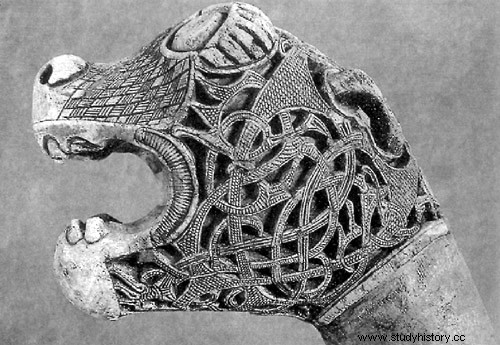This fabulous animal knew in the North a fortune comparable to that which was his in the East, without it being possible to explain exactly why. In any case, this monster appears almost everywhere, not only in the myths, but also in the representations apparently unrelated to it:thus, a good number of runes are inscribed in the ribbon which forms the body of a dragon which bite the tail. And the Vikings, who sculpted the removable figureheads of their boat in the image of an animal, real or fabulous, often chose the dragon (dreki, pl. drekar) as their emblem (hence the aberrant French name “ drakkar").

In the North as elsewhere, the dragon plays a key role in promoting the hero:this is the case of Sigurdr, aptly nicknamed Fâfnisbani, "murderer of [the dragon] Fâfnir", or other heroes of his descendants, such as Ragnarr lodbrok. Fighting a dragon will be an almost natural prerogative of any protagonist of fornaldarsaga (legendary saga).
On the other hand, Midgardsormr - the Great Serpent of Midgardr -, one of the three monstrous children of Loki, is a dragon (or worm or serpent:the word ormr is ambiguous), which lodges in the Great Sea; he bites his own tail, and when he releases his grip, it will be the Ragnarok. This dragon is the declared enemy of Thôrr who misses no opportunity to confront it, without success however until Ragnarök. There remains the dragon Nidhtoggr which gnaws at the foot of the great cosmic tree Yggdrasill and is given to us for the mortal enemy of the falcon Vedrfölnir perched on the top of the tree.
